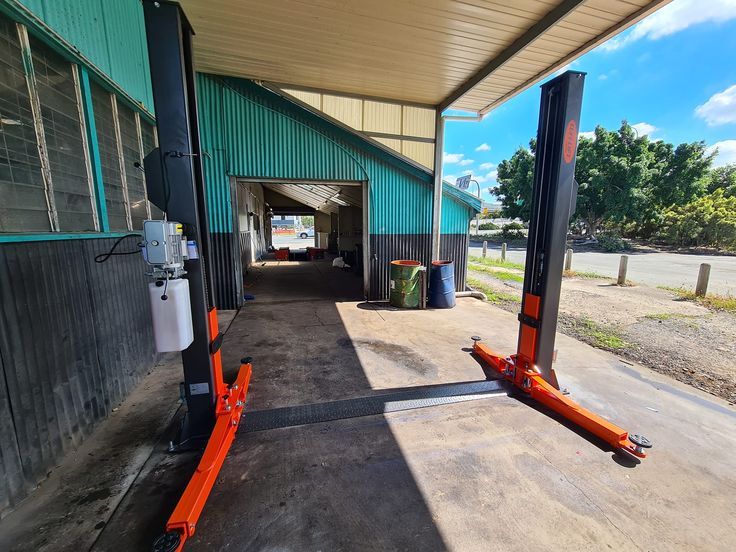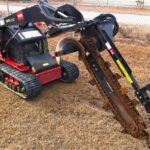If you are an automotive enthusiast, or if you own an automotive business, you know just how important it is to have the right tools at your disposal. One of these required tools includes a vehicle hoist. For when you have to do some routine maintenance work or a major repair, having easy access to the underside of a vehicle can take up less time and effort. Vehicle hoists have been developed to lift cars safety and securely and are therefore impossible to do without not only for household garages, but for the commercial workshops as well.
So what is making an investment in a vehicle hoist a good idea? So, let’s dive into the vast amount of benefits they provide, discuss various types that can be found on today’s market, and find out those aspects, which are significant prior the installation to your own vehicle hoist. And with recommendations on installation steps as well, you’ll be prepared to make your work space like never before!
Benefits of Using a Vehicle Hoist
install vehical hoist provides the numerous advantages for residential and commercial use. Improved accessibility is one of the major advantages. Using a hoist, it is very easy to access all the areas underneath your vehicle without straining hence.
Efficiency is another critical factor. Hoists enable mechanics and DIY doers to work faster where repairs and maintenance tasks become simple affairs. This efficiency is translated to the saving of time, which, in professional settings, may result into allocating fewer personnel lapses.
Safety is very important too. Through lifting vehicles safely, hoists eliminate possibilities of accidents which are likely to occur during the use of jacks or ramps. The sense of stability they offer guarantees to enjoy inner peace while operating under a car.
Also, purchase of a vehicle hoist can add an additional value to your property. Professionalism and being capable of doing something well are signaled when one has a well installed hoist, and this draws potential customers to you if you are operating under an automotive business context.
Types of Vehicle Hoists and their Features
There are many shapes and designs of vehicle hoists that are meant to serve different uses. The most common type of hoist used for residential as well as commercial purposes include two-post hoists. They have great accessibility, whereby technicians can work easily on undercarriages.
Four-post hoists have an extra stability and flexibility. Their design accommodates heavier vehicles thus can be used as storage systems when they are not in use, and this makes them a lover’s delight.
Scissor lifts have a compact structure which is unique to it. Ideal for tight spaces, they raise vehicles high while providing convenient access to all of the areas underneath.
Flexibility is introduced into the equation by portable hoists. Perfect for mobile mechanics or people who live in small apartments, these lightweight variants allow one easily to lift cars anywhere.
Every type of vehicle hoist has some distinctive features that fit a set of tasks and surroundings. Knowledge on such differences assists the users to make the right selection of what solution to adopt.
Factors to Consider Before Installing a Vehicle Hoist
There are a couple of important considerations that need to be made before you can decide to install a vehicle hoist.
First, assess the available space. Measure your garage or workshop very accurately. Make sure that you have sufficient clearance both for the vehicle and the hoist itself.
Next, consider weight capacity. Different vehicles have various weights. Pick a hoist that is able to manage your biggest vehicle easily.
Consider power requirements too. There are hoists that run on normal electricity while others may require specialized connections.
Do not forget about local regulations and safety codes. Getting to know these helps to adhere and gives you peace of mind when in operation.
The type of installation is important too – above-ground and in-ground options necessitate different foundation work requirements, and accessibility needs for maintenance-type activities.
Steps for Proper Installation of a Vehicle Hoist
A successful vehicle hoist installation requires you to take the following critical steps during an installation. First, choose the right location. There should be enough space in the area to allow for the hoist as well as easy access by vehicles.
Then, determine the floor’s strength and integrity. A suitable concreted slab is vital as it has to hold the weight of the vehicle in addition to the weight of the very hoist. Ensure that your garage or workshop conforms to local codes and regulations of building.
Select an appropriate location, prepare all tools and components before you start your installation process. It is very useful more often than not to have a second person to help you in this phase.
Assembling the hoist comes next; strictly adhere to manufacturer’s instruction so as not to make any mistakes that may jeopardize safety or performance. Attach the components securely, being particularly careful about bolts and connections – they are essential for safe operation.
Once you are through with the assembly, confirm everything and start testing your newly installed vehicle hoist with lighter loads before increasing the load. That way, you will get a chance to learn how it works without risking damages or accidents.
If you doubt in some of the steps of this process, you should consult professionals, like the specialists in vehicle hoists installation. Their knowledge can be a time saver and will make sure everything operates at its optimum as set by safety standards.
By following these steps, one not only ensures that one uses their vehicles effectively, but also the element of safety is improved as one does vehicle repairs in either home-based or commercial workshops.













Leave a comment